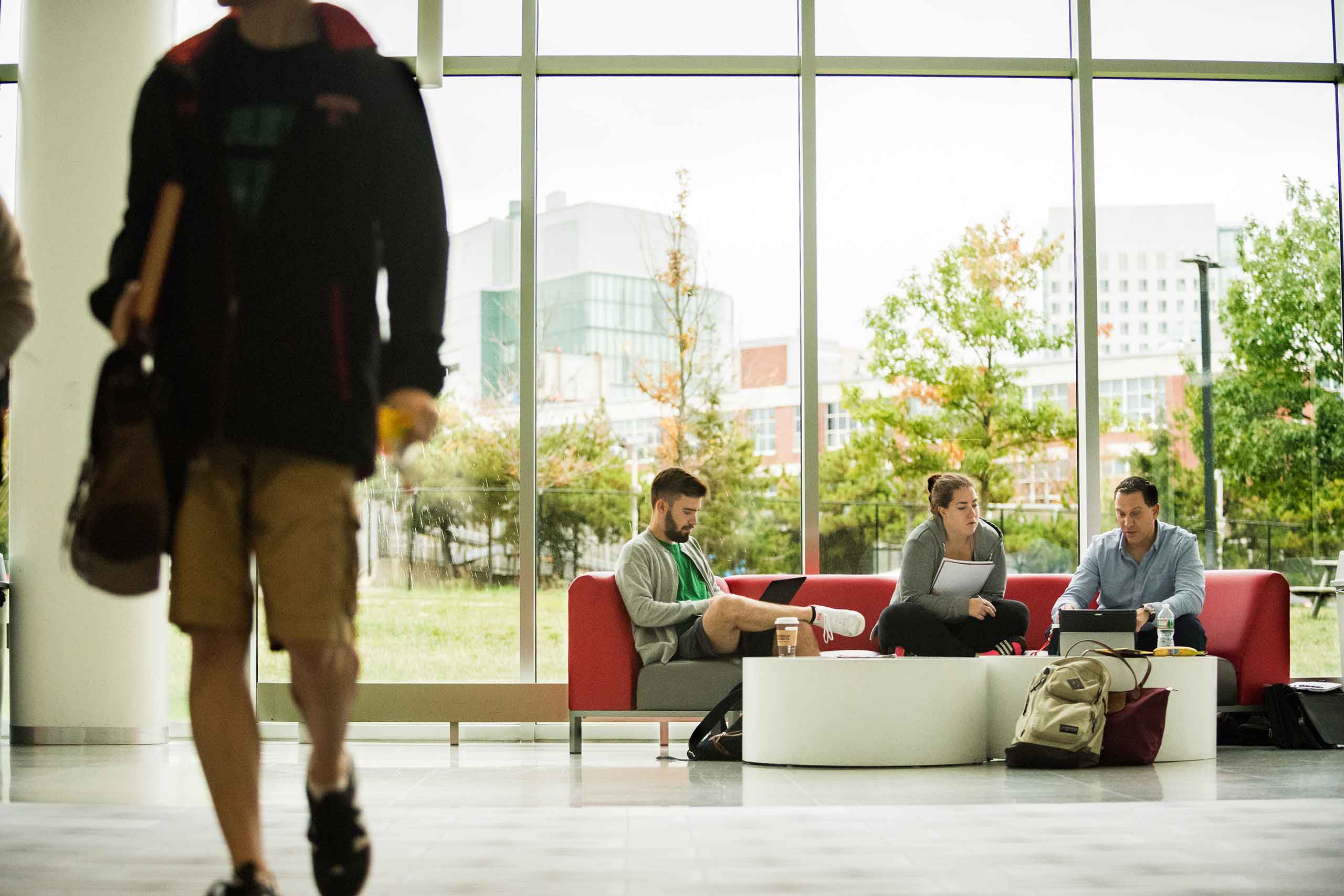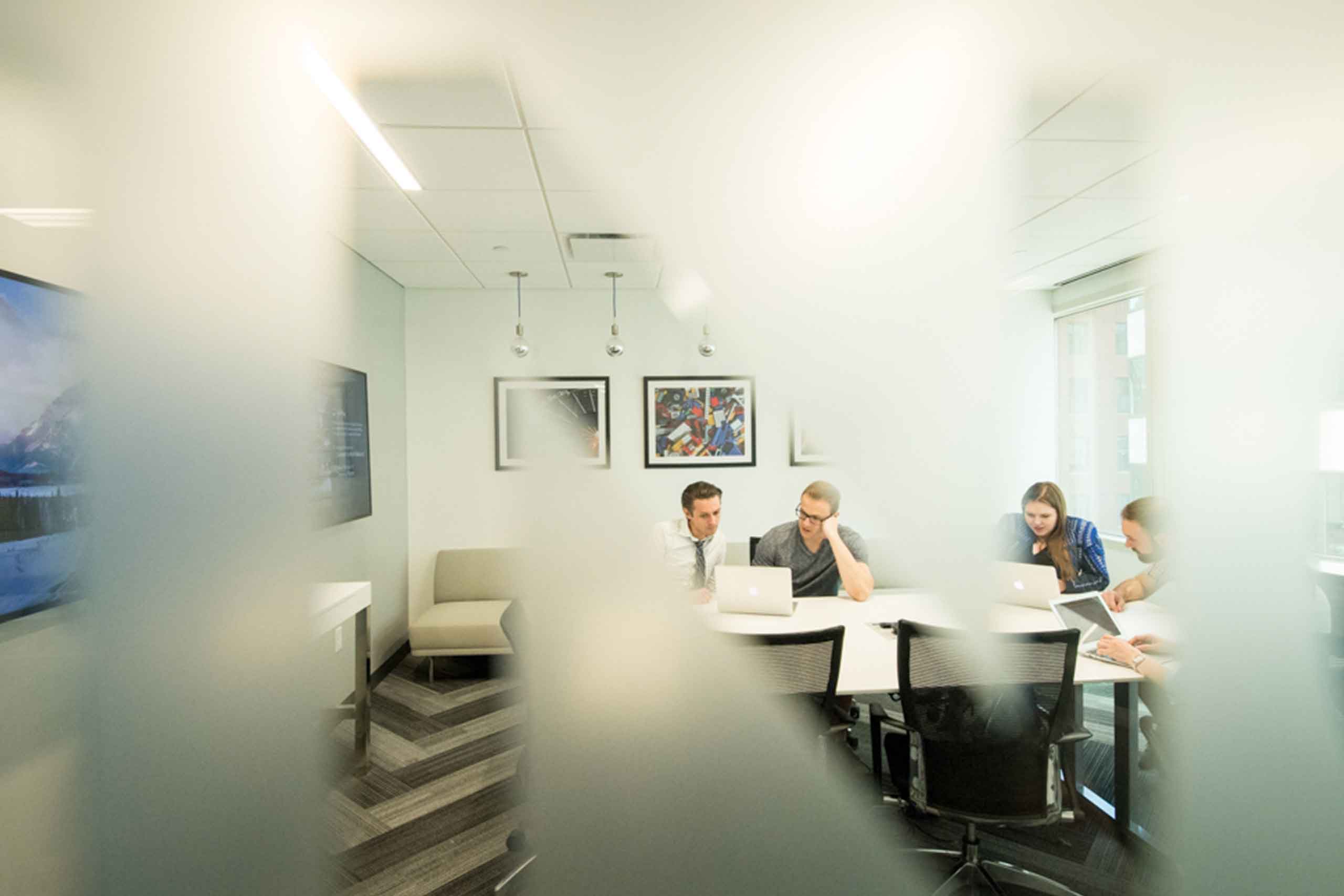

How the Coronavirus Outbreak Has Reshaped U.S. Education Overnight

Wed 03.25.20

How the Coronavirus Outbreak Has Reshaped U.S. Education Overnight
Wed 03.25.20



Wed 03.25.20

Wed 03.25.20



Wed 03.25.20

Wed 03.25.20
Online coursework and degree programs have been around for decades. In fact, Professor Martin Schedlbauer, Director of Online Programs & Faculty at the Khoury College of Computer Sciences, has taught in virtual classrooms since 1999.
Technology has advanced dramatically since then, and many teachers already utilize internet-enabled tools for classroom instruction. However, the coronavirus outbreak has forced nearly every educator from kindergarten through graduate school to move online entirely. And not in months or weeks, but in days. With both public and private schools closed across the country, expectations must shift in terms of how education will continue — not only in terms of what educators can do, but how school districts, parents and communities support them.
“There are a few basic principles of distance learning and a number of best practices when it comes to developing an online course,” says Professor Schedlbauer. “There are nuances when it comes to teaching an undergraduate-level course online versus K-12 classes, but unilaterally, managing a virtual classroom is challenging. All teachers — no matter their exposure to remote instruction — are in need of information and resources on distance learning right now.”
According to Professor Schedlbauer, there are two primary approaches in the universe of online education, and educators new to distance learning should understand both to avoid the common missteps associated with each. On one end of the spectrum is synchronous learning — online education that happens in real-time and trades a physical classroom for a virtual one. Connectivity and technical issues are often the greatest challenges associated with a synchronous approach.
“Educators cannot underestimate the importance of the hardware and software used to teach an online course,” says Schedlbauer. “To effectively manage a virtual classroom, you need the ability to see your students clearly, to talk and to ensure they hear you. I recommend scheduling classes five minutes ahead of the hour or half-hour, which allows enough time for students to get set up and troubleshoot any technical issues before class gets started.”
On the opposite end of the spectrum is asynchronous learning — a remote instruction model that typically involves pre-recorded lectures and more static interaction between instructors and their students. Here, educators are challenged with keeping students engaged and establishing an online presence.
“Because asynchronous learning most often entails breaking lessons plans up into smaller, more easily consumed videos and material, teachers need to put in a great deal of time and thought in advance to deliver engaging coursework.” says Professor Schedlbauer.
Most often, educators tasked with remote instruction find the most success with a hybrid model of both synchronous and asynchronous learning. But even then, there are larger obstacles for teachers to overcome.
Outside of the typical hiccups teachers and students often encounter in a distance learning setting, the U.S. education system must take into consideration the unique circumstances of this pandemic. Students, parents and teachers themselves are grappling with far greater issues than lesson plans and exams.
The Pew Research Center reports that while broadband internet usage has increased dramatically over the last decade, more than one-third of Americans rely on smartphones for internet access. Despite the best work of our nation’s educators, students who do not have access to a computer or high-speed internet at home are at a disadvantage, and in some situations, disqualified entirely from participating in online courses. The closure of public libraries will further exacerbate these accessibility issues too.
Then there is the dilemma of childcare, not only for teachers who find themselves working from home, but for parents and guardians now responsible for overseeing their children’s day-to-day education. Professor Schedlbauer says that most often, parents of K-12 students will want to support teachers in the online education process — they just don’t know how, nor do they have the time in their own work-from-home schedules. Beyond that, parents and guardians employed in the hospitality and service industries may now be furloughed or out of work indefinitely. This means food and housing security become their household’s primary concerns.
There is no one-size-fits-all solution to these macro challenges, Professor Schedlbauer says. But, much like in a physical classroom, it will be important over the course of the next several weeks for teachers to prioritize 1:1 support for students who need it. And, to get creative when it comes to ensuring all students are able to learn. For instance, for a student without access to the internet at home, but who does have a smartphone with YouTube, a teacher might outline a variety of YouTube video lessons and create an individualized evaluation plan. This problem-solving mentality is nothing new for teachers; it will just take on a virtual form.
Just as teachers consider how to create special circumstances when needed for students, they must do the same for themselves. For example, what if a teacher becomes ill and can no longer provide instruction? For this reason, it is important for a teacher to have a “back up” teacher who has access to all of their materials and tools, should they need to step in and lead the class.
Developing a comprehensive online course is a major effort, Schedlbauer says, requiring three to six months of planning and preparation. Unfortunately, this is not what educators are being asked to do today. “What we’re doing is triage,” says Professor Schedlbauer.
Educators at all levels must remember that this is a unique situation. When possible, it is important to relax expectations—such as moving to a pass/fail grading system for some courses, particularly at the collegiate and graduate levels—and focus on what needs to happen in the next four weeks before planning for the next 12. Teachers should also build and rely upon a community of their peers, which will help facilitate sharing online education best practices. Acknowledging these unprecedented times, Professor Schedlbauer says that all we can expect of educators is that they do their very best to lay a foundation for students to return to in the fall.
Education at every level has never faced such adversity. It’s important, Professor Schedlbauer concludes, for teachers, students, and parents to acknowledge and work toward their common goal: for students to succeed and thrive.
Online coursework and degree programs have been around for decades. In fact, Professor Martin Schedlbauer, Director of Online Programs & Faculty at the Khoury College of Computer Sciences, has taught in virtual classrooms since 1999.
Technology has advanced dramatically since then, and many teachers already utilize internet-enabled tools for classroom instruction. However, the coronavirus outbreak has forced nearly every educator from kindergarten through graduate school to move online entirely. And not in months or weeks, but in days. With both public and private schools closed across the country, expectations must shift in terms of how education will continue — not only in terms of what educators can do, but how school districts, parents and communities support them.
“There are a few basic principles of distance learning and a number of best practices when it comes to developing an online course,” says Professor Schedlbauer. “There are nuances when it comes to teaching an undergraduate-level course online versus K-12 classes, but unilaterally, managing a virtual classroom is challenging. All teachers — no matter their exposure to remote instruction — are in need of information and resources on distance learning right now.”
According to Professor Schedlbauer, there are two primary approaches in the universe of online education, and educators new to distance learning should understand both to avoid the common missteps associated with each. On one end of the spectrum is synchronous learning — online education that happens in real-time and trades a physical classroom for a virtual one. Connectivity and technical issues are often the greatest challenges associated with a synchronous approach.
“Educators cannot underestimate the importance of the hardware and software used to teach an online course,” says Schedlbauer. “To effectively manage a virtual classroom, you need the ability to see your students clearly, to talk and to ensure they hear you. I recommend scheduling classes five minutes ahead of the hour or half-hour, which allows enough time for students to get set up and troubleshoot any technical issues before class gets started.”
On the opposite end of the spectrum is asynchronous learning — a remote instruction model that typically involves pre-recorded lectures and more static interaction between instructors and their students. Here, educators are challenged with keeping students engaged and establishing an online presence.
“Because asynchronous learning most often entails breaking lessons plans up into smaller, more easily consumed videos and material, teachers need to put in a great deal of time and thought in advance to deliver engaging coursework.” says Professor Schedlbauer.
Most often, educators tasked with remote instruction find the most success with a hybrid model of both synchronous and asynchronous learning. But even then, there are larger obstacles for teachers to overcome.
Outside of the typical hiccups teachers and students often encounter in a distance learning setting, the U.S. education system must take into consideration the unique circumstances of this pandemic. Students, parents and teachers themselves are grappling with far greater issues than lesson plans and exams.
The Pew Research Center reports that while broadband internet usage has increased dramatically over the last decade, more than one-third of Americans rely on smartphones for internet access. Despite the best work of our nation’s educators, students who do not have access to a computer or high-speed internet at home are at a disadvantage, and in some situations, disqualified entirely from participating in online courses. The closure of public libraries will further exacerbate these accessibility issues too.
Then there is the dilemma of childcare, not only for teachers who find themselves working from home, but for parents and guardians now responsible for overseeing their children’s day-to-day education. Professor Schedlbauer says that most often, parents of K-12 students will want to support teachers in the online education process — they just don’t know how, nor do they have the time in their own work-from-home schedules. Beyond that, parents and guardians employed in the hospitality and service industries may now be furloughed or out of work indefinitely. This means food and housing security become their household’s primary concerns.
There is no one-size-fits-all solution to these macro challenges, Professor Schedlbauer says. But, much like in a physical classroom, it will be important over the course of the next several weeks for teachers to prioritize 1:1 support for students who need it. And, to get creative when it comes to ensuring all students are able to learn. For instance, for a student without access to the internet at home, but who does have a smartphone with YouTube, a teacher might outline a variety of YouTube video lessons and create an individualized evaluation plan. This problem-solving mentality is nothing new for teachers; it will just take on a virtual form.
Just as teachers consider how to create special circumstances when needed for students, they must do the same for themselves. For example, what if a teacher becomes ill and can no longer provide instruction? For this reason, it is important for a teacher to have a “back up” teacher who has access to all of their materials and tools, should they need to step in and lead the class.
Developing a comprehensive online course is a major effort, Schedlbauer says, requiring three to six months of planning and preparation. Unfortunately, this is not what educators are being asked to do today. “What we’re doing is triage,” says Professor Schedlbauer.
Educators at all levels must remember that this is a unique situation. When possible, it is important to relax expectations—such as moving to a pass/fail grading system for some courses, particularly at the collegiate and graduate levels—and focus on what needs to happen in the next four weeks before planning for the next 12. Teachers should also build and rely upon a community of their peers, which will help facilitate sharing online education best practices. Acknowledging these unprecedented times, Professor Schedlbauer says that all we can expect of educators is that they do their very best to lay a foundation for students to return to in the fall.
Education at every level has never faced such adversity. It’s important, Professor Schedlbauer concludes, for teachers, students, and parents to acknowledge and work toward their common goal: for students to succeed and thrive.











